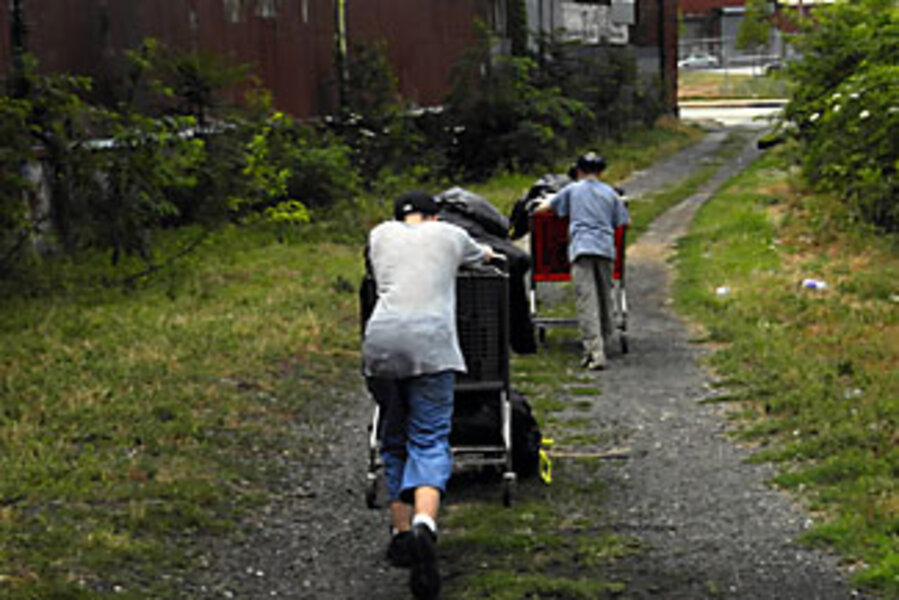Who's poor? It depends on where you live, some say.
Loading...
For the federal government, the concept of poverty is simple. If a typical family of four earns less than $21,100 a year, they're poor. If a single working woman makes less than $10,787, she's in poverty.
It doesn't matter whether these people live in Omaha, Neb., where the average apartment rents for $600 a month, or in New York City, where a similar apartment costs $1,600 a month. That's the way it's been since the federal government decided how to measure poverty in the mid-1960s.
Now, a steadily growing number of experts and policymakers argue that the poverty line should look like a wave, fluctuating with geography. That's the way New York officials see it, too. Last month, they unveiled a first-of-its-kind poverty measure that includes the city's actual costs of living.
"It really changes the picture of what the current face of poverty is," says Linda Gibbs, New York's deputy mayor for health and human services. By accounting for the high costs of housing and transportation, Ms.
Gibbs says the city will have a much more accurate idea about who is most in need.
New York's new poverty measurement takes into account rent, utility fees, food costs, clothing costs, and also includes other benefits for low-income families and individuals like Section 8 housing vouchers and food stamps. The change is expected to boost the city's poverty rate from 19 percent to 23 percent. That would mean 30,000 more people would qualify for assistance programs.
"If you're serious about tackling poverty, you've got to have good information," Gibbs says. "You've got to be willing to test and innovate and try new ideas. And if you have a measure that doesn't allow you to have the knowledge to understand whether what you're trying is working, you can't seriously try to tackle poverty."
Gibbs says this more accurate count will enable New York to better plan its policies and distribute resources to those who need them most. Other cities are looking at New York's experiment.
"We all have the same questions, particularly here in San Francisco where the cost of living, much like New York's, is really high," says Dwayne Jones, director of San Francisco's Communities of Opportunity program and the senior poverty adviser to Mayor Gavin Newsom.
Even though a new measurement like New York's would raise San Francisco's poverty rate, it's a step the city is willing to take, he adds.
The reason the federal line doesn't vary is that it's based mainly on the cost of food. That was reasonable in the 1960s, when groceries accounted for nearly one-third of household expenses. Now, they only make up about one-eighth of budgets. Many more expenses – from rent to transportation to healthcare – factor into the costs of daily life.
For many years, poverty experts have argued that the food-based measure doesn't accurately portray reality. Once in the '70s and again in 1995, they convinced Congress to take up the issue and try to revise the federal guidelines. Both times Congress requested reports but essentially ignored their recommendations.
That's par for the course, reformers say.
"If you've been around long enough, then you're not overly surprised," says Sheldon Danziger, a member of the National Academy of Sciences panel of experts in the mid-1990s and now director of the National Poverty Center at the University of Michigan. "This is not something that's on the radar screen of most politicians."
New York Mayor Michael Bloomberg is an exception. His administration relied heavily on the National Academy of Sciences 1995 report to draft the city's new measurement.
At the federal level, a bill moving through Congress aims to update the federal measurement by including the sharp geographical differences in expenses. Written by Rep. Jim McDermott (D) of Washington, it has already garnered support from Sen. Barack Obama during his presidential campaign.
Though there is some political liability in supporting a new measure that would probably mean more people in poverty, many experts say the update is long overdue and that New York's move should provide the momentum to get other cities – and possibly the federal government – to make a similar revision.





